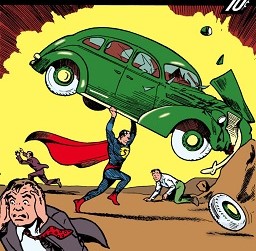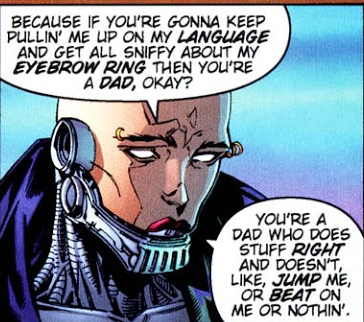
Hello! Good morning! Happy New Year, for those who are celebrating!
It’s #publicdomainday, and the following is a list of the best characters from the pulps who were created in 1926 and thus fall into the public domain starting today.
1/78
It’s #publicdomainday, and the following is a list of the best characters from the pulps who were created in 1926 and thus fall into the public domain starting today.
1/78
Note that I’m using “pulp” in the Barthesian way, as a “metaphor without brakes:” anything that is pulp (by my definition) in character is included, regardless of whether or not it appeared in a pulp, a film, a novel, or whatever.
2/78
2/78

Also, I’m taking these from my Encyclopedia of Pulp Heroes, which you can find online at jessnevins.com/pulp/introduti…. You can find more information about all of these characters and thousands more in the Encyclopedia.
3/78
3/78
Everil Worrell’s Frank Alison. Alison is a cowboy riding a train across the badlands when he gets kidnaped by an alien, Gorlog, intent on enslaving him and several others. Alison escapes. In the sequel, Alison goes to Gorlog’s home planet and frees all his slaves.
4/78
4/78
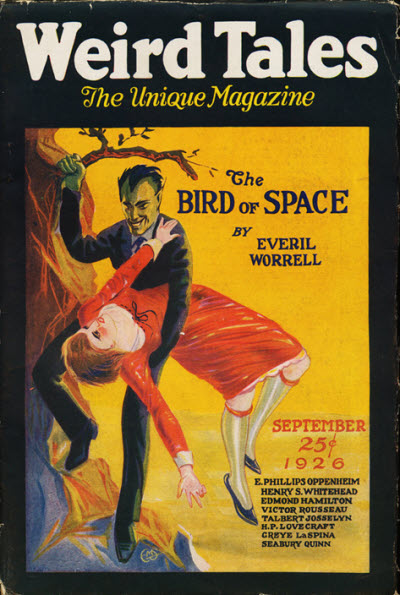
Obviously there’s meat left on the bone here: cowboy vs slaver alien, cowboy as interplanetary adventurer, six-guns versus disintegrators, Gorlog as an early (the first?) Little Green Man (he’s little & green)…lots that could still be done with Alison.
5/78
5/78
Don Amaizo, from a 1926-1927 radio serial. Don Amaizo, “the Golden Violinist,” who plays music around the world and finds adventure everywhere he goes.
Two-fisted violinist! The Action Stradivarius! Music, molls, and mobsters!
6/78
Two-fisted violinist! The Action Stradivarius! Music, molls, and mobsters!
6/78
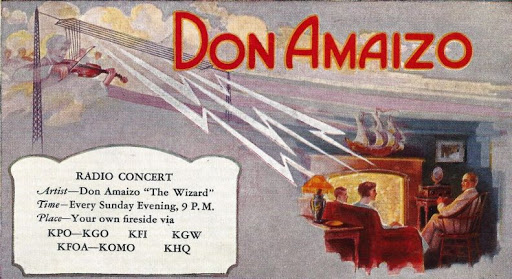
E. Hoffmann Price’s Pierre d’Artois. A French occult detective active in France, the Iberian Peninsula, and the Mediterranean. He fights ghouls, necromancers, Satanists, and cultists, and teams up with an Islamic scholar for anti-Cthulhu Mythos activities.
7/78
7/78

The D’Artois stories aren’t particularly well-written, but they have potential. D’Artois’ stomping grounds are not the usual settings for occult detective stories, and Price does a good job of making d’Artois’ home city of Bayonne into an alluring locus for spookiness.
8/78
8/78
John Dickson Carr’s Henri Bencolin. Once famous, now forgotten. “Mephistopheles with a cigar,” the “most dangerous man in Europe,” the juge d’instruction of the Paris police and a private detective on the side. A flamboyant, eccentric dandy.
9/78
9/78

Loves jazz nightclubs. Loves catching criminals more. When he’s about to catch a criminal, he wears full evening attire and carries a sword cane, regardless of time of day and of the setting. “The foremost police official in Europe.”
10/78
10/78
Successful mysteries, it’s said, are two-thirds character and one-third plot. Well, here you’ve got a larger-than-life detective who usually solves tricky puzzle plots. Tailor-made, in other words, for some enterprising writer to continue the Bencolin series.
11/78
11/78
Douglas Fairbanks Sr. & Albert Parker’s The Black Pirate. From the film of the same name. Fairbanks plays the Black Pirate, a nobleman who swears vengeance on the pirates who killed his father and becomes a pirate to do so.
12/78
12/78

Is pirate fiction out of fashion? Not if it’s done well, no. This is basic, archetypal pirate stuff, including a princess for Fairbanks to fall in love with, ship-to-ship battles, and swinging-from-the-yardarms action. Lots of good stuff to use in here
13/78
13/78
John W. Duffield’s Bomba the Jungle Boy. Once famous, now forgotten. A white Tarzan in the jungles of the Amazon, but not raised by apes. Some sticky racial stuff involving the local tribes, of course, but still less racist than Tarzan.
14/78
14/78

I think of Bomba as a less problematic Tarzan—animal friends, local tribal allies, appropriately evil enemies. I understand most people will say “to hell with the concept altogether,” but I think politically progressive stories can still be told using Bomba, if not Tarzan. 15/78
Edward Parrish Ware’s Jack Calhoun. A US Ranger active in the “sunken lands” of northeastern Arkansas (which, hey hey, is where I’m typing this). It’s mostly swamp, and that’s Calhoun’s milieu, and it’s what Ware describes fairly well, actually.
16/78
16/78

Calhoun fights “swamp rats,” scary inbred smugglers, counterfeiters, blackmailers, and murders. They force him to be “hard-boiled without much conscience,” in his own words, a killer vigilante going up against crazed murderers like the Panther and the Jungle Butcher.
17/78
17/78
Ware does environment/setting well, and Calhoun is memorably hardboiled, and his opponents are suitably nasty. The Calhoun stories aren’t immortal, but they are solid pulp entertainment and would do nicely for a revival.
18/78
18/78
Henry Whitehead’s Gerald Canevin is a Virginian fiction writer who travels across the Caribbean and encounters and fights various outré creatures and beings, most of which are connected either to voodoo or to the Cthulhu Mythos.
19/78
19/78

The Canevin stories are colonialist as hell. But Whitehead was a better writer, stylistically and imaginatively, than most of the rest of the WEIRD TALES crew, and his portrayals of the Caribbean islands are vivid (he lived on St. Croix).
20/78
20/78
H. Bedford-Jones’ Peter J. Clancy is a short (5’4”) dentist in Paris. “His face was wrinkled–kindly, shrewd wrinkles, they were–and his eyes were very bright, of a piercing gray.” Former French Foreign Legion, of course, and a very Parisian American. 

Clancy puts his knowledge of dentistry and stamps (he’s a collector) to good use in solving a variety of puzzling mysteries. He is Watsoned by an Army veteran/boxer.
22/78
22/78
Bedford-Jones was one of the pulps’ best writers, and the Clancy stories are satisfying while also leaving the reader wanting more. So, writers, get cracking!
23/78
23/78
Walter Frost’s Jim Clavering has a problem. The women he loves was, ahem, involved in the theft of several valuable jewels. Clavering, a WW1 vet, wants the stones returned to their rightful owners so that Helen, his sweetie, won’t be in any trouble. However—
24/78
24/78

That involves reverse-burglary—breaking into places to return the stolen gems—and that’s difficult, and harder with each attempt. (Clavering manages, of course—he’s smart, clever, and tough).
25/78
25/78
I’m not sure I’ve seen reverse-burglaries as a series premise before—which means you, dear writers, would be blazing a nearly untrodden trail if you started writing Jim Clavering stories.
26/78
26/78
Johnston McCulley’s Crimson Clown is a costumed vigilante. He’s, also a wealthy bachelor playboy, a WW1 veteran, a big game hunter, and an explorer of the North Pole. He steals from rich crooks and returns the stolen money to its rightful owners.
27/78
27/78

When he goes hunting, he wears the white outfit seen here, arms himself with a “gas gun,” and goes out into the night in search of prey. He’s hunted by the police, of course.
28/78
28/78
The Crimson Clown is a ghastly frickin’ nightmare, of course—just *look* at that picture I posted two tweets back—it’s a clown with a gun, drinking Scotch! Pure nightmare fuel—which is why bringing him back and making him *really* scary would be a great idea.
29/78
29/78
French author Frédéric Causse’s Chevalier de Trélern is “Bonaparte’s Aviator.” The patriotic Trélern, a brilliant inventor, is devoted to Napoleon’s cause & invents a propellor-driven dirigible for him. With the dirigible Napoleon conquers most of Europe.
30/78
30/78

The Austrians send their spies after Trélern but are foiled by a French policeman who reveals that the real cause of Trélern’s problems is the Vicomte D’Erlande, a foul, wicked Fantômas-like genius and traitor to Bonaparte.
31/78
31/78
All you alternate history writers, here’s your cue! Bonaparte’s Aviator—tell me you can’t spin out a novel or series of stories about the Chevalier de Trélern.
32/78
32/78
Robert A. Dillon’s Tracy Down is a master thief who employs two chimpanzees to help him with his crimes in Paris, across Africa, and in New York City. (Look, if you don’t see the potential here, I can’t help you).
33/78
33/78

French author Jean de la Hire’s Franc-Hardi is an adventurous French Boy Scout who, with his sister, four of her friends, and eleven other Scouts has a series of adventures around the world in the “radio plane” of the inventor-engineer Korrides.
34/78
34/78

They visit the Hollow Earth, travel across the Solar System, and explore Mars, where they fight Martians suspiciously like H.G. Wells’.
BOY SCOUTS…IN…SPAAAAAACE.
35/78
BOY SCOUTS…IN…SPAAAAAACE.
35/78
Alexei Tolstoi’s Garin is an an American engineer who invents the "hyperboloid," a laser-like heat ray, and uses it to try to CONQUER THE WORLD! He discovers a massive deposit of gold and claims it, overcoming various sleazy Europeans and corrupt Americans on the way.
36/78
36/78

He threatens the world with ecological disaster and briefly succeeds in ruling the decadent, capitalist United States before he is toppled thanks to the efforts of a sexy adventuress and a poor-but-honest Russian policeman.
37/78
37/78
The time is right for Communist Pulp to live again! Для Родины!
38/78
38/78
Arthur D. Howden Smith’s Gray Maiden is a thin gray sword of excellent forging and a bloodthirsty disposition. Forged for Pharaoh Thutmose III and tempered in the blood of one the Pharaoh loved and one he hated, it is used throughout the centuries.
39/78
39/78

The blade is “keen and terrible, O hate that was relentless unto death” and is irresistible in battle. The Maiden is covered with writing, Egyptian, Greek, and even some English: "Gray Maide men hail Mee/Death doth Notte fail Mee."
40/78
40/78
The Gray Maiden stories are unjustly forgotten, I think. There was a 2010 reprint of the stories—check it out, then get to writing some new stories about the Maiden.
41/78
41/78
The Hardy Boys are in the public domain! This is not a drill! Slash writers, get your Chet/Frank and Joe/Tony Prito stories ready!
42/78
42/78

Chinese author Xiang Kairen’s Huo Yuanjia is a martial arts master who in the 1890s is disgusted by China’s decrepit state. He founds a martial arts school that he hopes will cure China’s spiritual, cultural, and political sickness.
43/78
43/78
Huo defeats three foreign martial arts masters as a way of demonstrating the superiority of his martial skill, but then the Boxer Rebellion takes place, though Huo and his best friend Big-Knige Wang fight valiantly they are killed during the fighting in Beijing.
44/78
44/78
(Big-Knife Wang)
Lots of potential here—it’s very political wuxia fiction which could easily be turned upon the modern Chinese government (or, y’know, upon us guizi and our imperialist ways).
45/78
45/78
The Portuguese author Reinaldo Ferreira’s Jim-Joyce is a NYC celebrity detective modeled on Nick Carter. He is “the terror of thieves and those with bloody hands.” He is consulted by policeman around the US on cases, and his Lestrade is Inspector Douglas.
46/78
46/78

Jim-Joyce’s Moriarty is the evil vivisector and surgeon Dr. Satanaz, who was born in 1714, is tall, gaunt, dresses all in black, and has a skull-like face and lidless eyes with enormous irises.
47/78
47/78
Jim-Joyce is modeled on dime novel detective Nick Carter. The secret to Carter’s success was a stand-out roster of villains. Dr. Satanaz would fit right in among them. So a modern writer of Jim-Joyce stories already has the villain & hero waiting for them to use.
48/78
48/78
Lord Dunsany’s Jorkens is in the public domain! Dunsany’s Jorkens stories are only the greatest club stories (sf-encyclopedia.com/entry/club_sto…) of all time, so get your tall tales ready!
49/78
49/78

Danish author Niels Meyn’s Mister X is a tuxedo-clad occult detective who fights a variety of mystical evils around the world, from the possibly Satanic femme fatale Lady Devil to a mummy in Egypt to cannibals in Deepest Africa to murderous androids—
50/78
50/78
to slave-murdering Indian sultans, vampires in London, pirates in the Caribbean, and African Leopard-Men. Mister X appears in stories with titles like “The Robot Man’s Love,” “The Druid’s Castle,” and “The Black Vampire.”
51/78
51/78
Mister X is pure pulp, with all that entails. (Imma tell you, oftentimes foreigners did pure pulp better than Americans). Shorn of the obvious racism, colonialism, and imperialism, the Mister X stories could be revisited quite profitably.
52/78
52/78
The nameless hero of Chinese director Zhang Shichuan’s WUMING YINGXIONG (1926) is a wandering martial arts expert—and a woman pretending to be a man, possibly the first such in Chinese martial arts movies.
53/78
53/78
The Russian creators Konstantin Schildkoet, Viktor Shklovsky, and Yuri Tarich created Nikita for the film Krylya Kholopa (1926). Nikita is a serf in Russia in the late 16th century who invents a pair of wings which grant him the ability to fly.
54/78
54/78
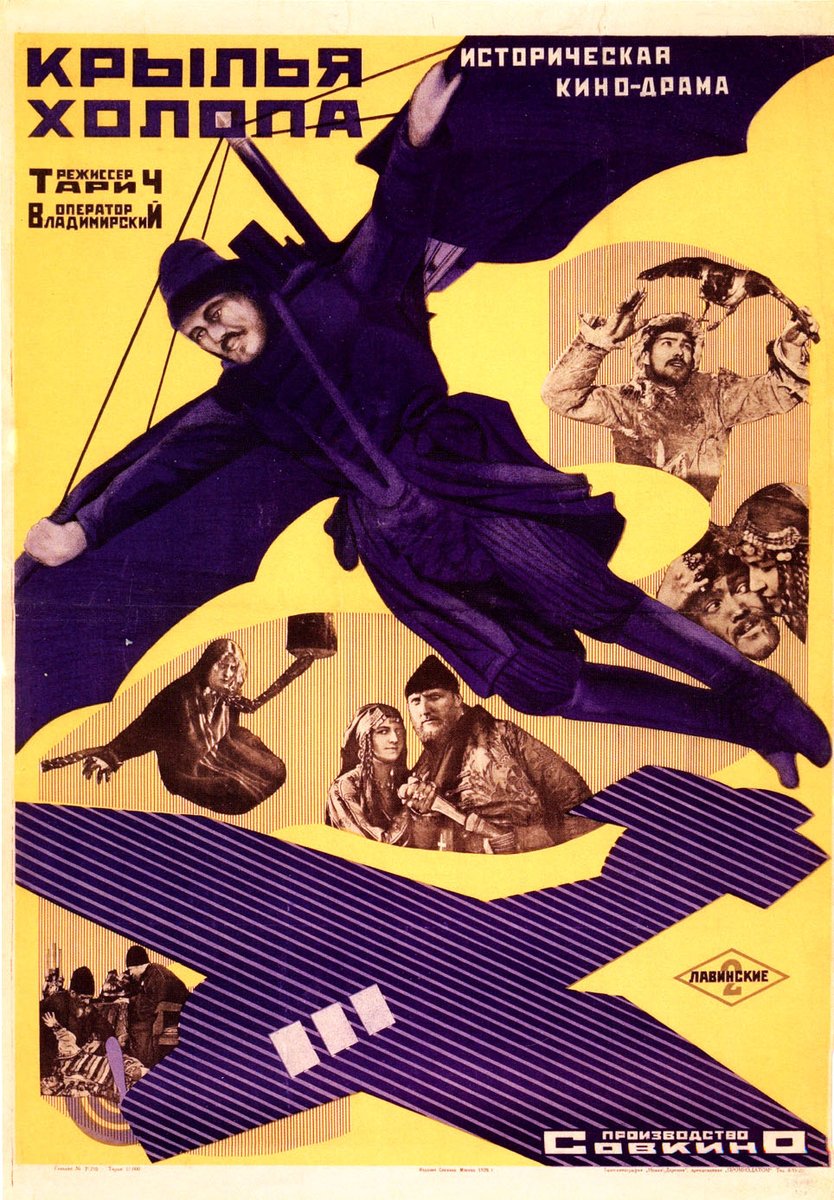
His invention does not bring him happiness, and everything ends tragically and bleakly, in proper Russian fashion. An anti-Tsarist film, but hardly a pro-Communist one.
55/78
55/78
Arthur Empey’s Terence X. O’Leary can’t be summarized in tweets. There’s just too much stuff. Go here: jessnevins.com/pulp/pulpo/ole… to read about the four iterations of O’Leary. #4 in particular is pure pulp sci-fi greatness.
56/78
56/78

The final iteration of Terence X. O’Leary, in TERENCE X. O’LEARY’S WAR BIRDS, is as close as the pulps got to an epic (with the exception of the Operator #5 stories, of course). And sequels to epics are a time-honored tradition. So go ahead and write one! More, even!
57/78
57/78
Indian author Melaccivapuri Panaiyappa Cettiyar’s Rankanatan is a Sherlock Holmesian Great Detective who is a patriotic Tamil who earnestly hopes for India’s independence from Great Britain. *Really* earnestly. He hates the Brits, basically.
58/78
58/78
Rankanatan disdains Gandhi’s tactic of passive resistance and prefers direct and even aggressive actions against the British oppressors.
(It’s kind of amazing that the Rankanatan stories were published under the eyes of the British censors).
59/78
(It’s kind of amazing that the Rankanatan stories were published under the eyes of the British censors).
59/78
Lots of different ways to go with a revival of Rankanatan. Historical? Great, the English in India make splendid villains! Modern? Just as great, Rankanatan would haaate the Modi government.
60/78
60/78
Mexican author Antonio Helú’s Máximo Roldán is a master thief; his name is an anagram for "ládron," or "thief.” He is an anti-hero who is both crime-solver and thief. He is tall, thin, intelligent, and nervous, being more than a little high strung.
61/78
61/78

He operates in a corrupt and violent Mexico City which is filled with unsavory policemen and evil businessmen. Roldán is gifted with la verborrea, the gift of gab, and he uses it to solve crimes and to enrich himself.
62/78
62/78
The Mexico City of the original Máximo Roldán stories and of today may, ahem, have some similarities. Roldán would fit perfectly in modern stories. Plus, he’s the quintessential Mexican Arsene Lupin, and we’ve all seen how well done a modern Lupin can be.
63/78
63/78
Arthur O. Friel’s Sixto Scott is a fortune hunter and adventurer in the jungles of the Orinoco. Son of an American soldier of fortune and a Colombian belle. He prefers to the jungles to civilization and spends his days as a petty trader in Indian hammocks.
64/78
64/78

Kipling had India; Edgar Wallace had the Congo; Harold Lamb had Central Asia; Friel had the Amazon. Friel’s adventure stories set there are among the best of their kind in the pulps. (Friel is an underrated pulp writer). Lots of potential here!
65/78
65/78
Achmed Abdullah (née Alexander Romanoff)’s Miss Smythe is a con woman. A Yankee, she runs a shop in a town along a trading route in the Sahara, and fleeces the “lambs” who wander through it.
66/78
66/78

Make the modern revival of the Miss Smythe stories about fleecing the crooked government employees and foreign tourists who ruin all that they touch, and the stories will practically write themselves!
67/78
67/78
Thorne Smith’s Topper is in the public domain! TOPPER was one of the most successful comic novels of the 1920s—you know the story from the movies, no doubt. The template, though—wry socialite ghosts haunt and help a hapless hero—first appeared in the novel.
68/78
68/78

I have to admit that the novel never worked for me, and that a little Thorne Smith goes a long way. But if you remove the “jolly” alcoholism and the contrived “humor,” you’ve got a series premise that could successfully go in any number of directions.
69/78
69/78
S.S. Van Dine’s Philo Vance is a fop detective--*the* fop detective, a tall, handsome man with gray eyes, an ability to solve mysteries, and an aristocratic, superior, insufferable manner. The Vance stories haven’t aged well, but a revisionist take might do finely.
70/78
70/78

The final word on Philo Vance belongs to Ogden Nash: "Philo Vance/Needs a kick in the pants."
(But a Philo Vance revival that didn’t worship the main character but deconstructed him while also showing him to be heroic despite his flaws could work).
72/78
(But a Philo Vance revival that didn’t worship the main character but deconstructed him while also showing him to be heroic despite his flaws could work).
72/78
Sydney Horler’s Baron Veseloffsky is based wholly on Baron Roman Ungern von Sternberg, a White Russian Army officer who attempted to establish a dictatorship in Mongolia in 1921.
73/78
73/78

to be honest, though, @BeijingPalmer’s BLOODY WHITE BARON (amazon.com/Bloody-White-B…) is a better read than the Horler books, so buy that one instead!
74/78
74/78
Russian author Aleksandr Beliayev’s Prof. Wagner is a wacky unlucky inventor! He is a Soviet scientist & inventor who decides that it is unjust that fleas can leap higher & farther than humans & attempts to create artificial means for men to leap as far & high as fleas.
75/78
75/78
His creation misfires. Later he also decides that he needs to find a way to cure people of the need to sleep. But wicked German capitalists kidnap him and steal his cure. Zany hijinks ensue!
76/78
76/78
An Unlucky Inventor comedy series with the backdrop of mid-1920s Soviet Russia wouldn’t be like anything else out there, and as long as the stories weren’t pro-Soviet the way the original Professor Wagner stories were, they could be very successful.
77/78
77/78
That’s all for this year! Thanks for reading!
78/78
78/78
• • •
Missing some Tweet in this thread? You can try to
force a refresh





